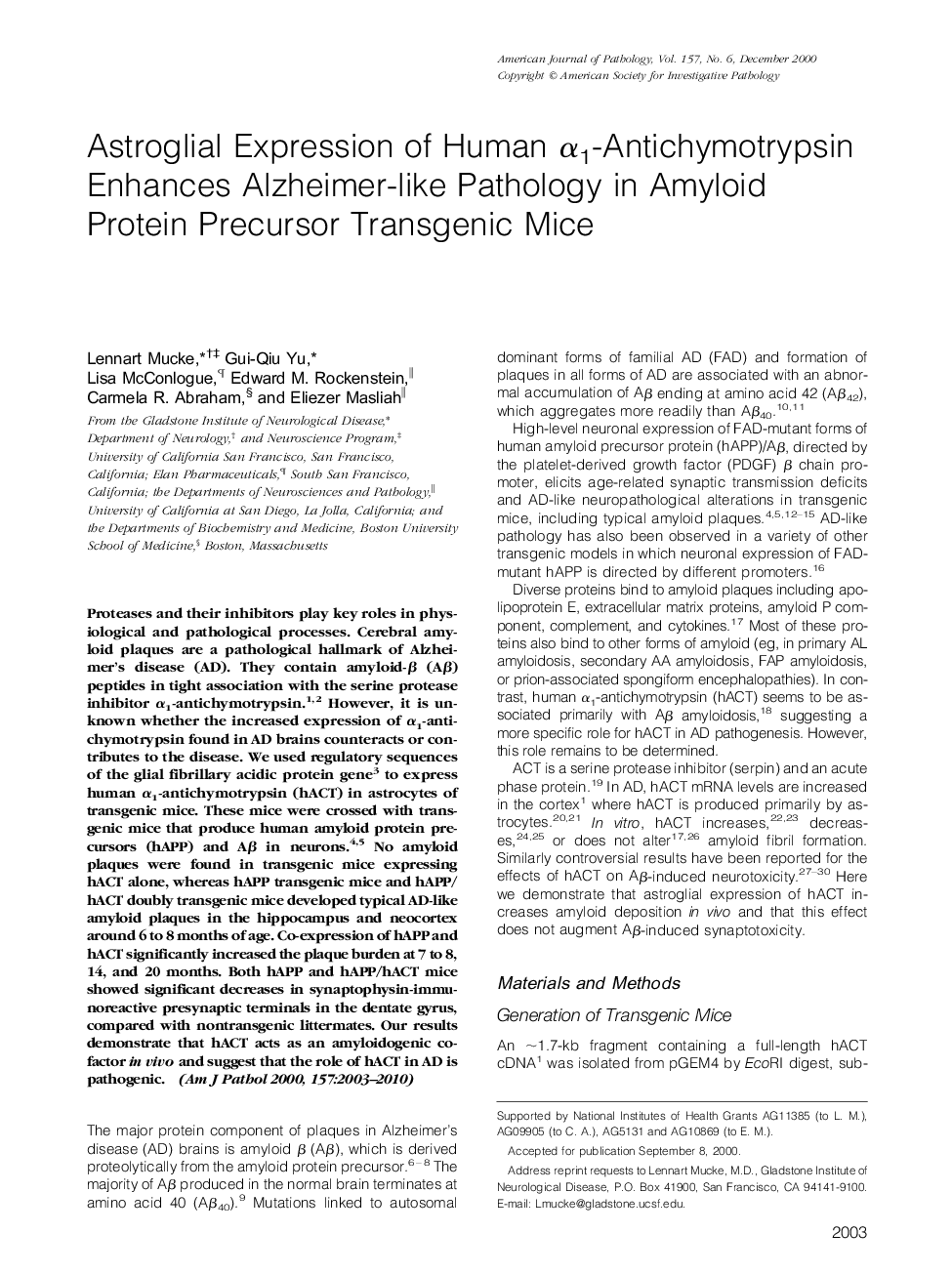| Article ID | Journal | Published Year | Pages | File Type |
|---|---|---|---|---|
| 5940807 | The American Journal of Pathology | 2010 | 8 Pages |
Abstract
Proteases and their inhibitors play key roles in physiological and pathological processes. Cerebral amyloid plaques are a pathological hallmark of Alzheimer's disease (AD). They contain amyloid-β (Aβ. peptides in tight association with the serine protease inhibitor α1-antichymotrypsin.1,2 However, it is unknown whether the increased expression of α1-antichymotrypsin found in AD brains counteracts or contributes to the disease. We used regulatory sequences of the glial fibrillary acidic protein gene3 to express human α1-antichymotrypsin (hACT) in astrocytes of transgenic mice. These mice were crossed with transgenic mice that produce human amyloid protein precursors (hAPP) and Aβ in neurons.4,5 No amyloid plaques were found in transgenic mice expressing hACT alone, whereas hAPP transgenic mice and hAPP/hACT doubly transgenic mice developed typical AD-like amyloid plaques in the hippocampus and neocortex around 6 to 8 months of age. Co-expression of hAPP and hACT significantly increased the plaque burden at 7 to 8, 14, and 20 months. Both hAPP and hAPP/hACT mice showed significant decreases in synaptophysin-immunoreactive presynaptic terminals in the dentate gyrus, compared with nontransgenic littermates. Our results demonstrate that hACT acts as an amyloidogenic co-factor in vivo and suggest that the role of hACT in AD is pathogenic.
Related Topics
Health Sciences
Medicine and Dentistry
Cardiology and Cardiovascular Medicine
Authors
Lennart Mucke, Gui-Qiu Yu, Lisa McConlogue, Edward M. Rockenstein, Carmela R. Abraham, Eliezer Masliah,
